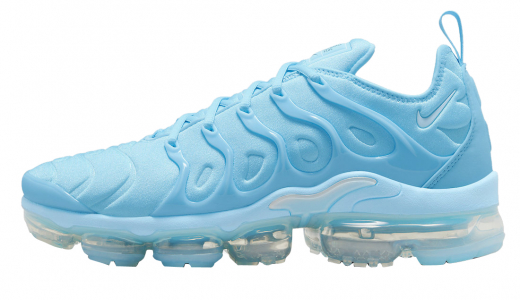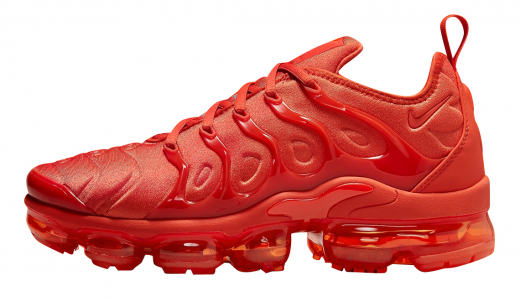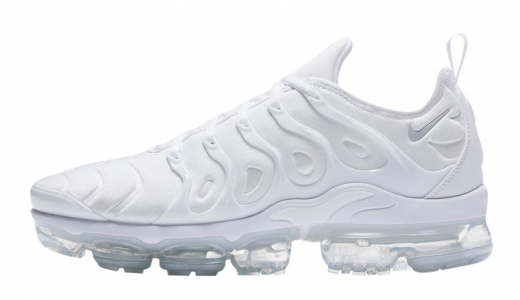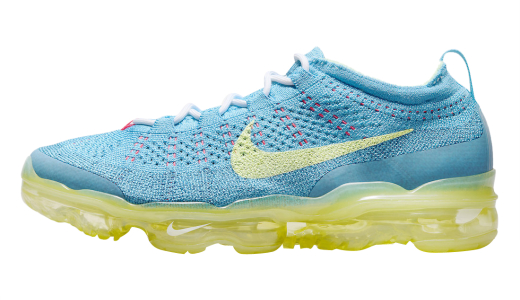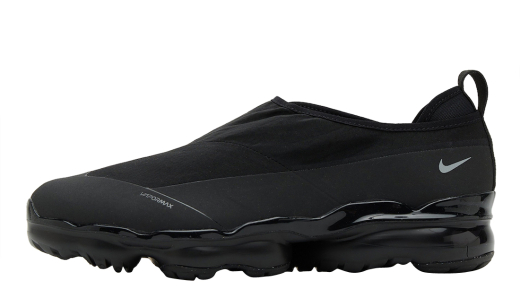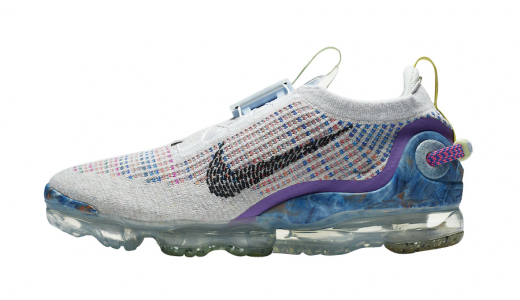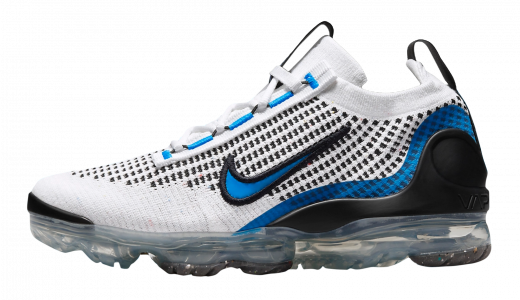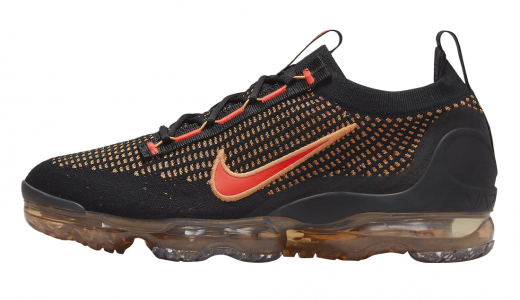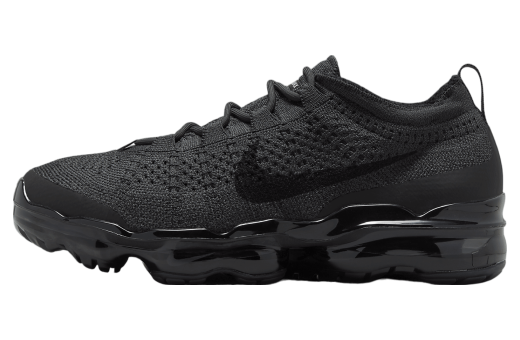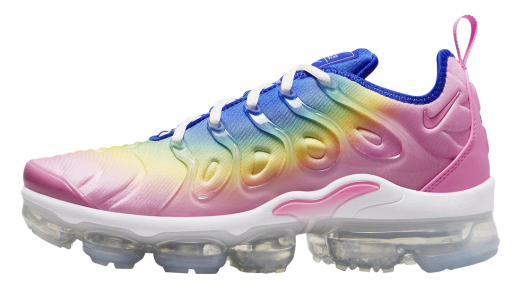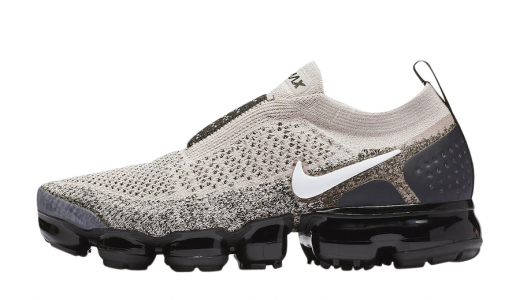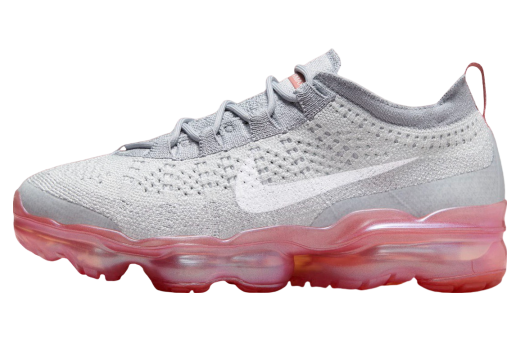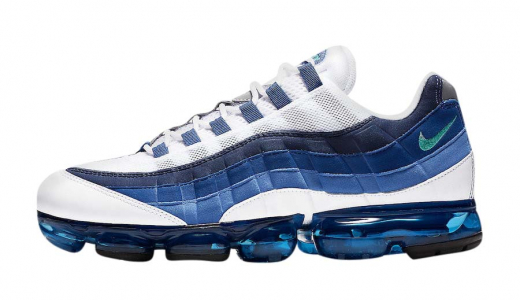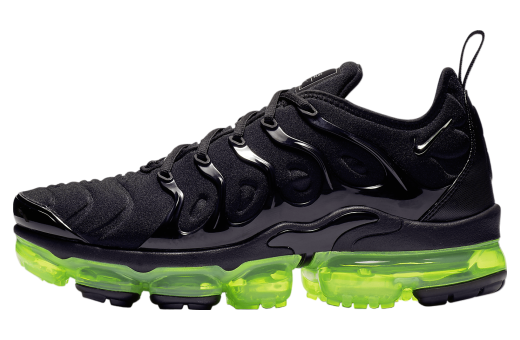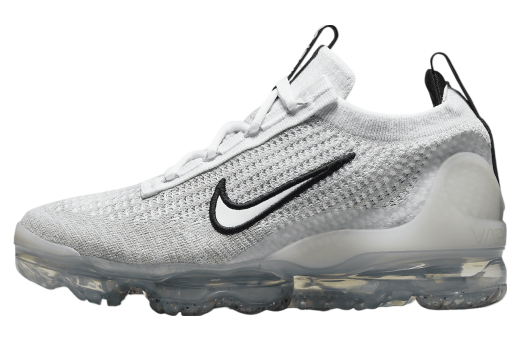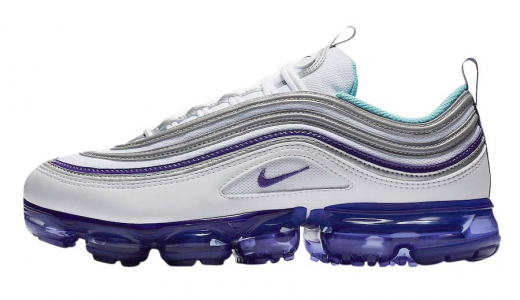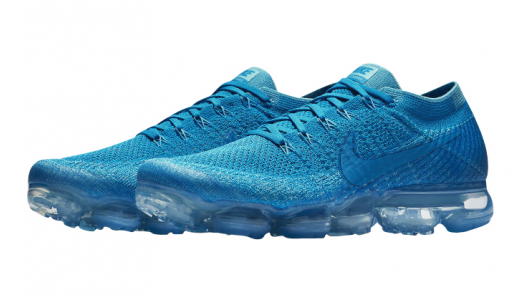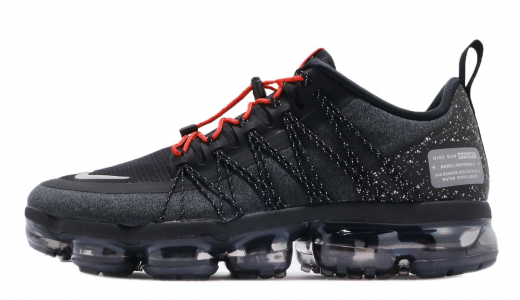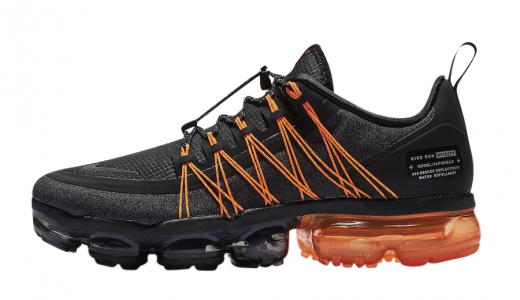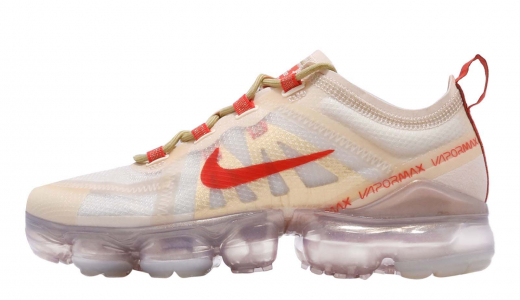Nike Air Vapormax
The Nike Air VaporMax is a trailblazing sneaker that represents the pinnacle of Nike's Air technology, providing unparalleled cushioning and a strikingly modern aesthetic. First introduced in March 2017, the VaporMax is distinguished by its innovative full-length Air sole unit, which delivers a lightweight and responsive feel with every step. This cutting-edge design eliminates the need for a traditional foam midsole, allowing for a direct and efficient connection between the foot and the Air cushioning.
The upper of the VaporMax is typically crafted from Nike's Flyknit material, offering a breathable, flexible, and snug fit that adapts to the foot's natural movement. This seamless construction enhances both comfort and performance, making the shoe ideal for running and everyday wear. The futuristic design is complemented by the shoe's translucent sole, which not only showcases the Air technology but also adds to its sleek and modern look.
Over the years, the Nike VaporMax has seen various iterations and collaborations, each bringing new colorways and design elements while retaining the core features that define the model. The VaporMax has become a favorite among sneaker enthusiasts, athletes, and fashion-forward individuals, solidifying its place as a revolutionary and stylish choice in the world of athletic footwear.
History of Nike Air Vapormax
The Nike Air VaporMax is a revolutionary product in the world of athletic footwear, symbolizing both a technological leap and a stylistic evolution. To understand its significance, we must delve into the broader history of Nike Air technology, its cultural impact, and the innovative journey that led to the creation of the Nike Air VaporMax.
The Genesis of Air Technology
The story begins in the late 1970s, with aerospace engineer Frank Rudy's groundbreaking idea of using air cushioning in shoes. Rudy approached Nike co-founder Phil Knight with his concept of encapsulating inert gas within a tough yet flexible membrane to create a "blown-air" cushioning system. This innovation aimed to provide superior shock absorption while reducing weight.
In 1978, Nike released the first Air technology shoe, the Nike Air Tailwind. Although initial reception was muted, the sneaker would eventually pave the way for a line of successful Air products, culminating in the monumental release of the Air Max 1 in 1987. Designed by Tinker Hatfield, the Air Max 1 was the first sneaker to feature a visible Air unit, a bold decision that showcased the technology as much as the functionality. The Air Max series became an instant success and forged a new legacy for Nike.
The Long Road to VaporMax
While the concept of visible Air units transformed the sneaker landscape, Nike's engineers and designers were relentlessly pushing the boundaries even further. Over the years, Nike released numerous iterations of Air Max, introducing innovations in upper materials, sole design, and overall aesthetics. However, one goal remained elusive: creating a sneaker where the Air unit could serve as the outsole itself, removing the midsole entirely and thereby achieving unprecedented levels of flexibility and cushioning.
Enter the Nike Air VaporMax—a product of over seven years of research and development. Designers and engineers at Nike approached this project with the ambition of developing a new, standalone Air cushioning system that would reshape the user's experience. This challenge required innovative methods in both structural engineering and material sciences.
The Structural Revolution: Breaking Down Air Units
A cornerstone of the VaporMax design was a deep understanding of how Air units could be optimized to support the entire foot. Traditional Air units had been embedded within a midsole, acting as supplementary cushioning. VaporMax, however, aimed to eliminate the midsole entirely, relying on strategically positioned Air pods to support and cushion the foot from heel to toe.
Essentially, the VaporMax sole is composed of multiple interconnected Air pods, each filled with pressurized air. These pods flex independently, creating a unique sensation very different from traditional foam or gel cushioning systems. The absence of a midsole not only enhanced flexibility but also contributed to a significant reduction in weight. The result was a lighter, more responsive, and highly adaptive shoe.
Material Innovations
In addition to the revolutionary sole, the Nike Air VaporMax introduced cutting-edge upper materials. The Flyknit technology, initially unveiled in 2012, was used for the shoe’s upper. This material is both lightweight and breathable, offering a glove-like fit while reducing overall weight. Flyknit technology allows precise zoning of support and flexibility, providing lockdown where needed and stretch where necessary.
The First Release
On March 26, 2017, also known as Air Max Day, Nike released the Air VaporMax to the public. The launch was met with much anticipation and excitement, as sneaker enthusiasts and athletes alike were eager to experience the latest in Nike’s long line of Air technology innovations. The inaugural colorway featured a sleek, all-black look, complemented by the transparent Air pods, offering both visual and functional appeal.
Nike marketed the VaporMax under the premise that it felt like "walking on air," a claim that resonated with consumers. Reviews noted the unique sensation provided by the independent Air pods, alongside the shoe’s lightweight and breathable Flyknit upper. Although the feel of the VaporMax was polarizing for some—particularly those accustomed to traditional foam midsoles—the overall reception was overwhelmingly positive.
Cultural Impact and Variations
Following its successful debut, the Nike Air VaporMax quickly became a cultural phenomenon. The sneaker was not only a popular choice among runners and athletes but also found a unique place in streetwear and fashion. Collaborations with high-profile designers, such as Virgil Abloh’s Off-White and Comme des Garçons, further elevated its status, making the VaporMax a staple in both athletic and fashion-forward contexts.
These collaborations often featured unique design elements, differing materials, and bold color palettes, broadening the VaporMax's appeal beyond just performance. As a result, the sneaker transcended its original market of athletes and became a mainstay in urban fashion circles.
The Evolution Continues
The success of the VaporMax led to numerous iterations and updates. Nike introduced various versions, such as VaporMax Flyknit 2, which included minor updates to the Flyknit pattern and cushioning system. Subsequent versions like the VaporMax 2019 incorporated new materials and improved structural elements to refine the user's experience.
In 2020, Nike amplified its sustainability efforts with the release of the VaporMax 2020 Flyknit, made from at least 50% recycled content by weight. This iteration showcased Nike's commitment to innovation and sustainability, employing eco-friendly materials without sacrificing performance.
Technical Specifications and Consumer Insights
What makes the Nike Air VaporMax stand out is its meticulous engineering and consumer-centric design. The sole comprises independent Air pods that absorb shock and distribute pressure, enhancing comfort during prolonged wear. The Flyknit upper adds another layer of adaptability and breathability, ensuring a snug yet flexible fit.
According to Nike, extensive testing and biomechanical analysis guided the placement of each Air pod, ensuring optimal performance across different terrains. This customization was pivotal for achieving the balance between durability, flexibility, and cushioning—key elements that set VaporMax apart from its predecessors.
Consumer feedback was a significant driver of iterative improvements. While the unique cushioning system garnered praise, some users initially found the sole to be less stable than traditional running shoes. Listening to these insights, Nike fine-tuned subsequent models, focusing on enhancing stability without compromising the hallmark features of flexibility and lightweight feel.
The Future of VaporMax and Air Technology
Nike Air VaporMax stands as a testament to human ingenuity in athletic footwear design. As of now, the VaporMax continues to be a flagship product, symbolizing the zenith of Nike’s Air technology. Yet, it’s clear that Nike does not intend to rest on its laurels.
Looking forward, Nike is likely to continue exploring new materials and manufacturing techniques to push the boundaries of what’s possible in athletic footwear. The lessons learned from the development and market reception of the VaporMax will unquestionably inform future innovations. In an industry that thrives on continual advancement, the Nike Air VaporMax represents both a remarkable milestone and a stepping stone toward ever more groundbreaking designs.
Conclusion
The Nike Air VaporMax exemplifies the successful integration of innovation, design, and consumer appeal. It represents a bridge between Nike’s pioneering Air technology and the future of performance footwear. By marrying revolutionary cushioning with cutting-edge materials, Nike has crafted a product that is as aesthetically captivating as it is functionally superior.
The journey from the original Air Tailwind to the Nike Air VaporMax encapsulates decades of technological advancement and creative vision. It's more than just a sneaker; it’s a symbol of what’s possible when relentless ambition meets unyielding innovation. As the VaporMax continues to evolve, it will undoubtedly inspire a new generation of athletes and fashion enthusiasts, solidifying its place in the annals of sneaker history.
